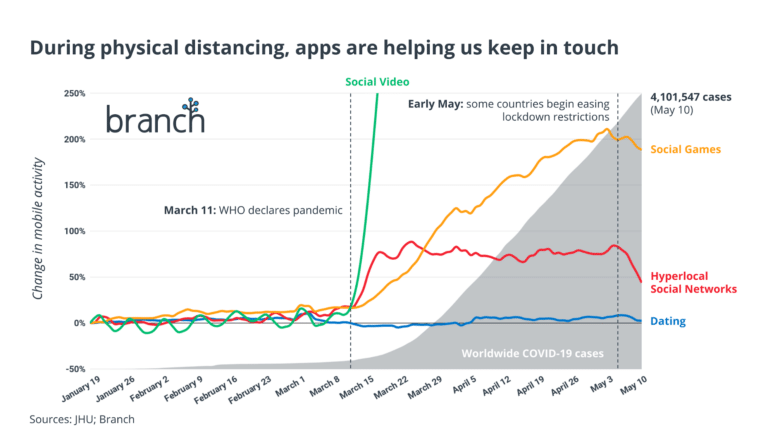The spread of the coronavirus has changed the world we live in and the way people interact with each other. With the shift to a more virtual world, people are looking for ways to meet new people and interact with their loved ones. Overall, people are spending 20% more time on apps since lockdown, so it’s more important than ever to adjust your strategy to meet the new demands of users and adapt to the shifts in consumer behavior. Here are some ways social and dating apps are adapting and engaging with users in the age of COVID-19, and how you can do the same:
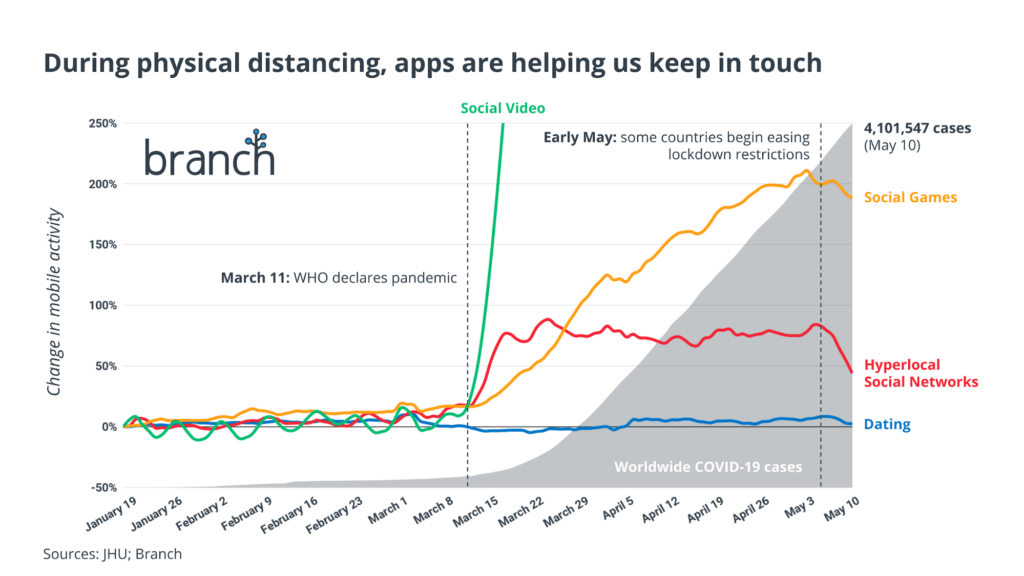
Various apps help users stay connected during physical distancing.
1. Increase Opportunities for Engagement by Making it Easier for Users to Connect
With users looking for more ways to interact with their friends and family during physical distancing, video chatting apps like Houseparty have seen a huge surge in growth. To meet the new needs of users that resulted from physical distancing mandates — such as the need to connect and do activities with friends that they can no longer do in person — Houseparty added a new feature that allows users to co-watch live events with friends. The launch event, called “In The House,” featured more than 40 celebrities who led users in different activities: cooking demos, comedy shows, fitness sessions, dance parties, sing-a-longs and more. The event encouraged users to join their friends on Houseparty, then tune in and watch the live content together. It’s likely that these types of co-watching experiences are here to stay, as they present a new way to take part in activities you’d normally do with friends but are currently suspended, such as attending concerts and workout classes together. Through its new feature, Houseparty met these pain points its users base is experiencing as a result of mandated physical distancing.
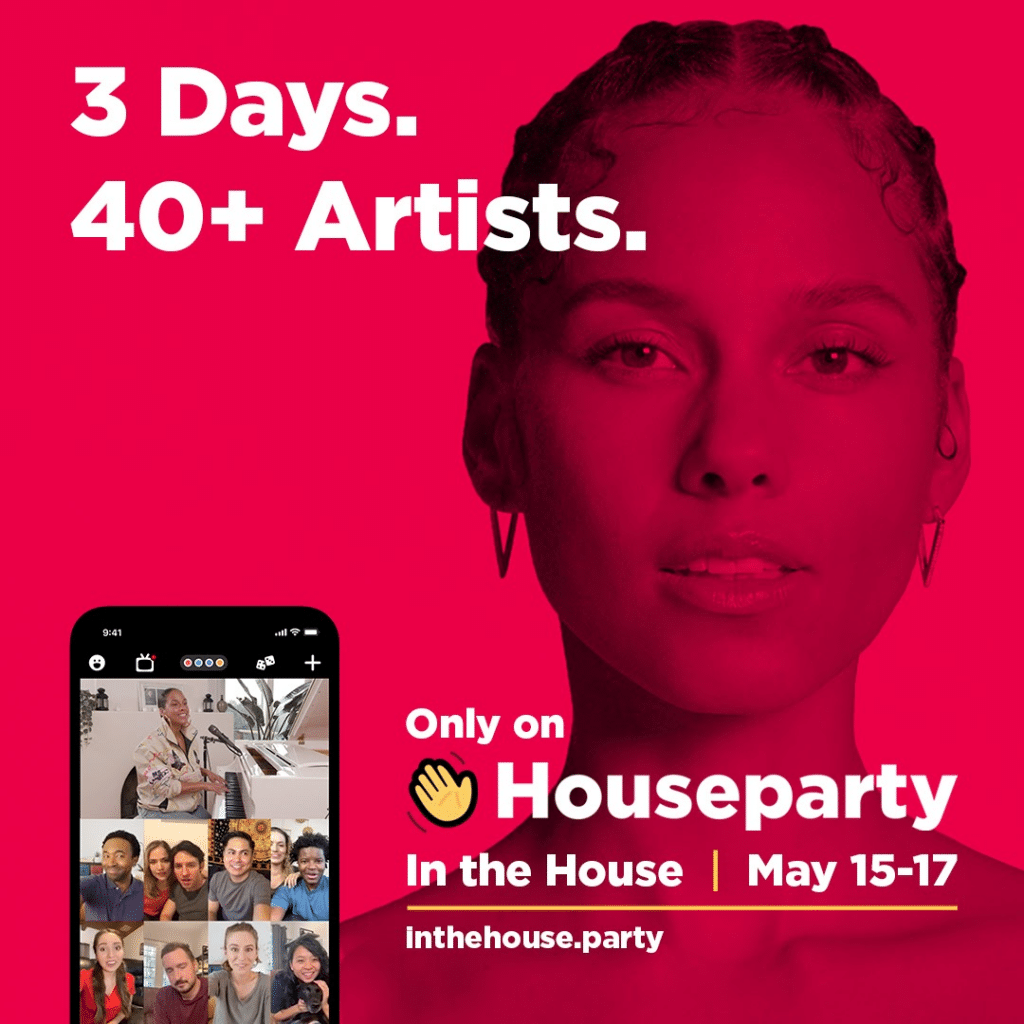
A promo for Houseparty’s “In The House” event.
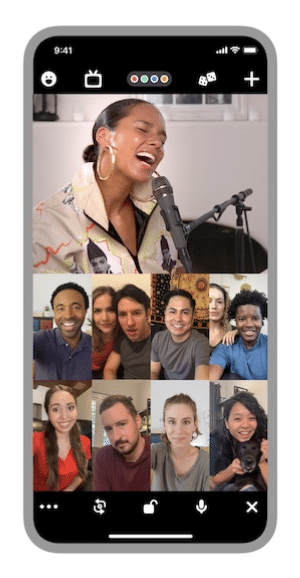
A concert during the In the House event.
Similarly, Facebook expanded its services to allow users to create Facebook Messenger Rooms through Instagram Direct Messages. The feature is designed to be a casual, more spontaneous video chat option, as users can join by clicking on a shared link rather than needing an invite, which is typical for other video chat services. It effectively mimics the quick, casual, last-minute “in the moment” nature of real-life hangouts, providing that experience that users can no longer have in the non-virtual world.
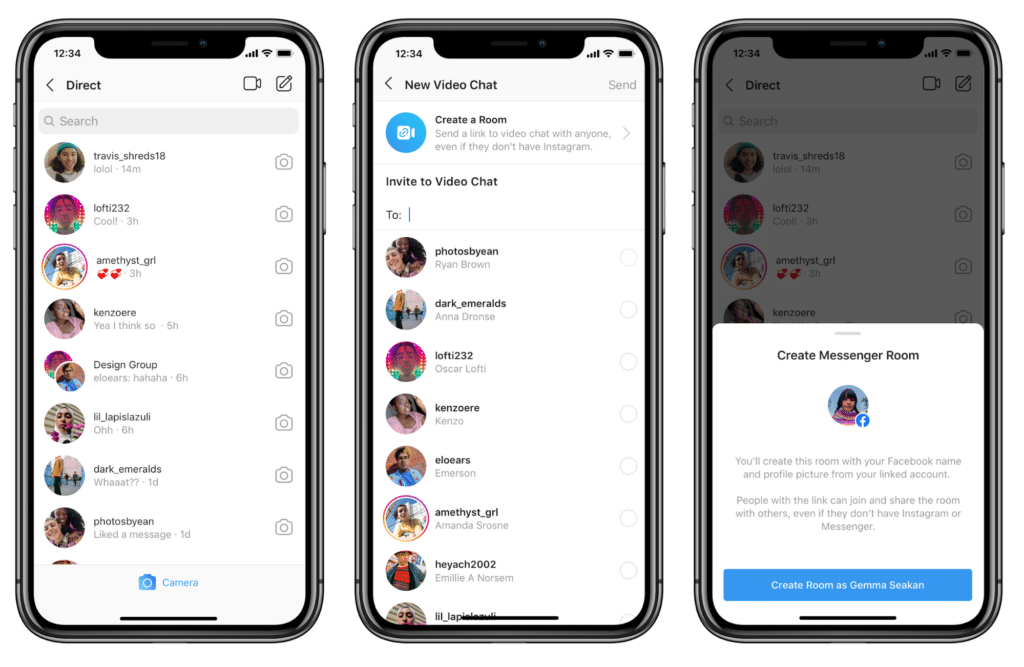
Creating a Facebook Messenger Room from Instagram DM.
Dating websites and apps have also adjusted their strategy to meet new user needs. To comply with physical distancing mandates but still offer options for people trying to romantically connect, dating websites and apps now offer opportunities for virtual dating other than your standard chat feature. For example, Hinge quickly rolled out a new virtual video date feature that asks users if they’re “ready to date from home.” Once both users respond that they’re ready, Hinge lets each user know of their potential match’s response, so they can take things to the next level through video chat or a phone call.
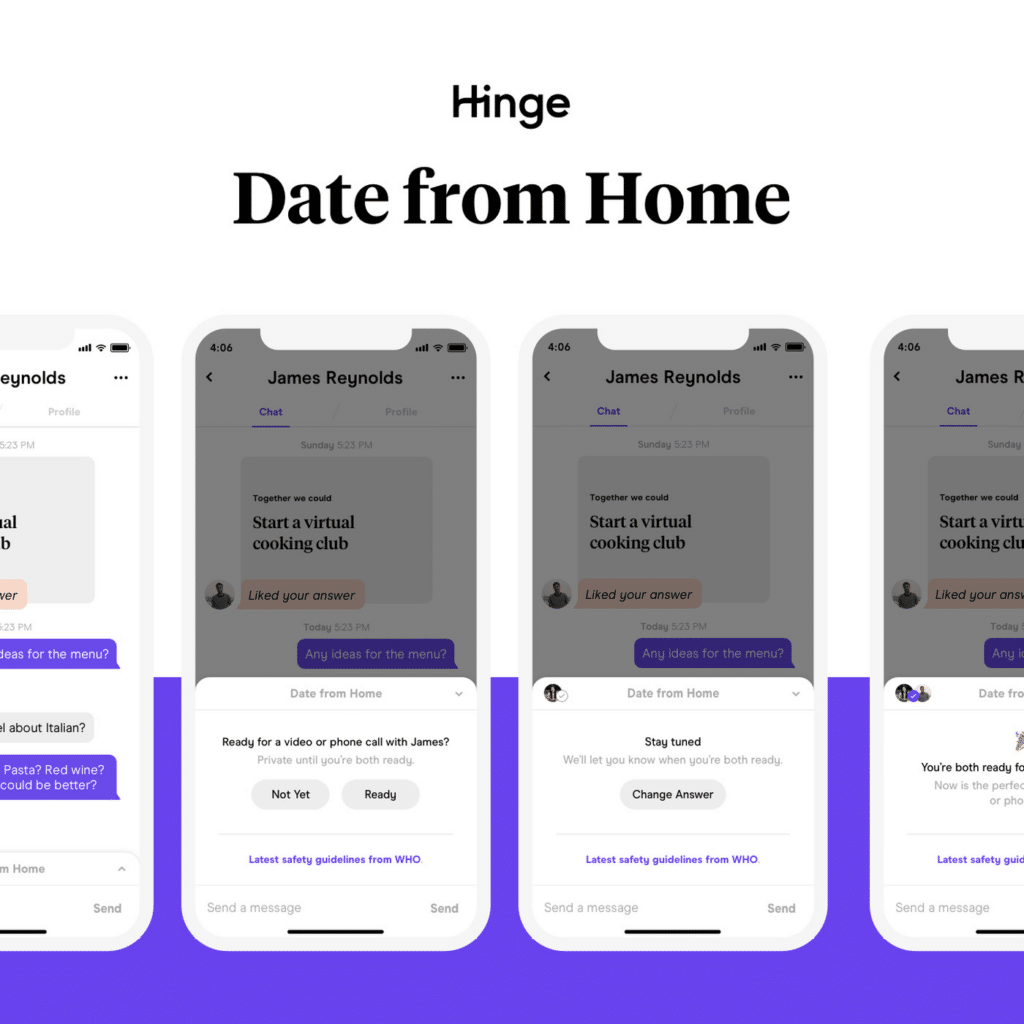
Hinge’s new Date from Home experience.
To offer users new ways to date virtually, Tinder created a feature called “Passport” that lets users connect with singles all over the world rather than just in your surrounding area. The feature is typically only available to Tinder Plus and Gold members who pay for subscriptions, but the company announced it would be making the feature free for all users amidst the coronavirus pandemic.
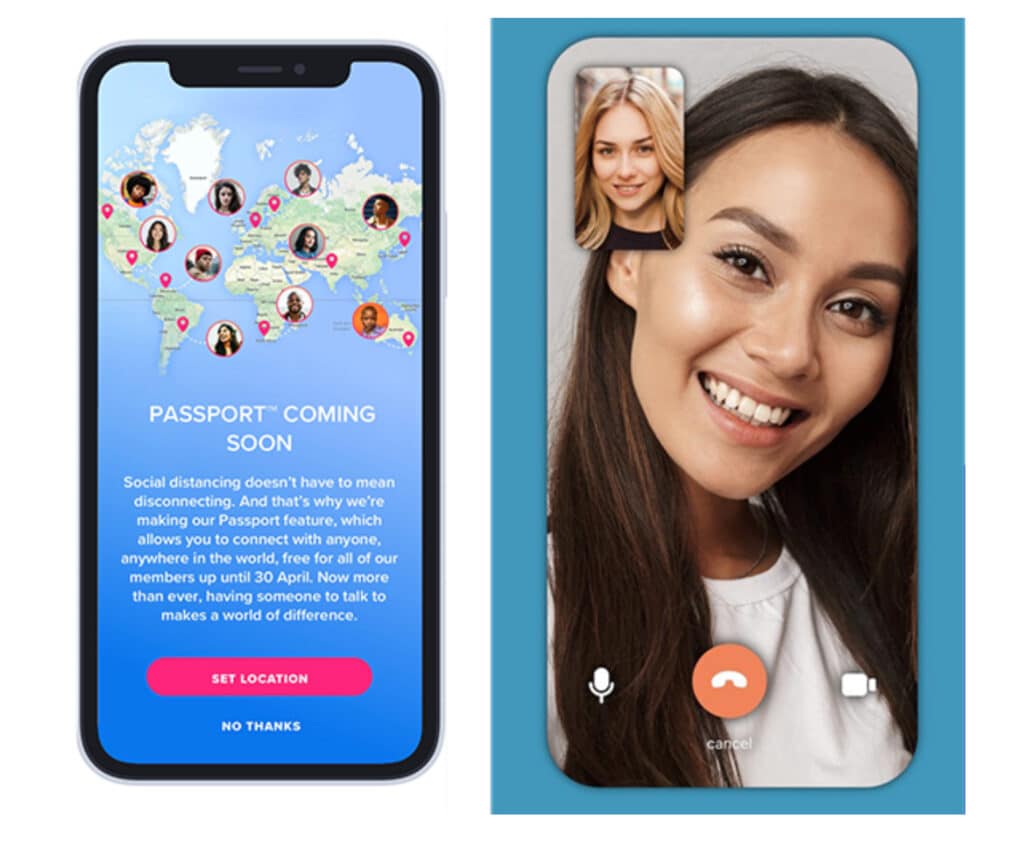
Tinder’s Passport feature.
Philip Jonzan Jar, co-founder of the Swedish dating app Relate, believes the normalization of video communication could be irreversible and as a result of virtual dating, there could be a new “pre-date step” being born that will last far after the pandemic. Takeaway: If you’re in the social space, you better be providing new and easier ways for users to connect from each other now that they’re longing for those connections. Alter, add on, or release a new feature that allows users to experience activities and connect online now that they can no longer do so offline. By adapting to new user needs, you soothe pain-points, drive engagement, retention, and increase the chances of virality.
2. Explore New Channels and Create Easily Engageable Content
There are some apps that have done exceedingly well in the midst of COVID, one of them being TikTok. The short music video app is now one of the most downloaded apps in over 40 countries and continues to grow in popularity. Why? TikTok provides multiple ways for users to interact with each other. In addition to creating their own short videos, users can “react” to another video by creating their own, such as matching the dance moves in a dance challenge or making their own spin-off. As a result, various TikTok video challenges often go viral and receive sky-high levels of engagement, with millions of likes, views, and comments. Additionally, with the cost of paid ad spend on social channels like TikTok and Facebook decreasing 20-40%, TikTok has seen an increase in brands utilizing micro-influencers on the platform to create compelling content for its audience. In the example below, More Labs utilizes a micro-influencer rather than expensive ads to drive awareness of the product for both the brand’s and the micro-influencer’s audience. The result: higher engagement levels for the brand and the micro-influencer.
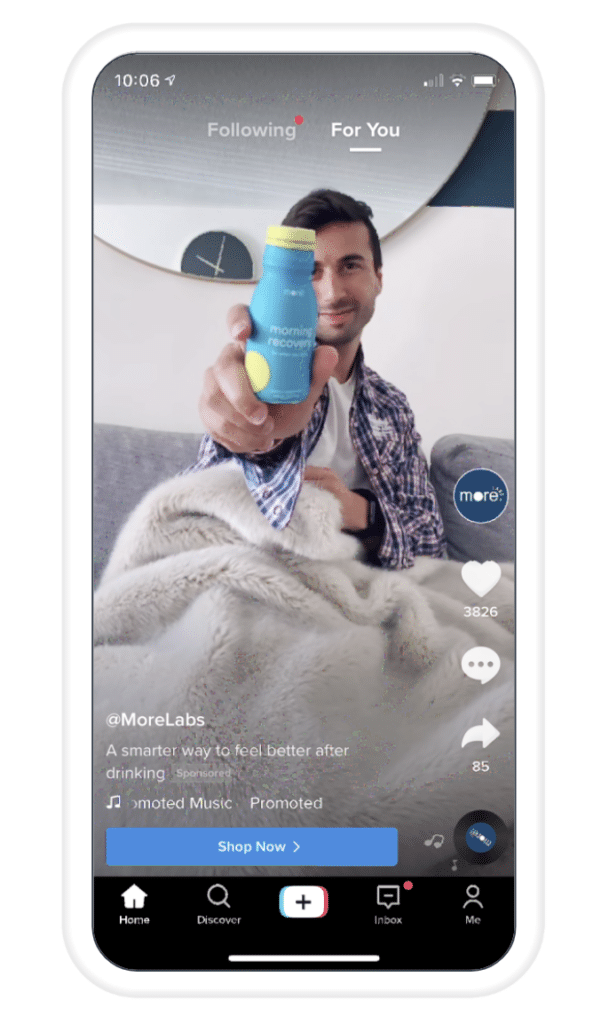
A brand utilizing a micro-influencer on TikTok.
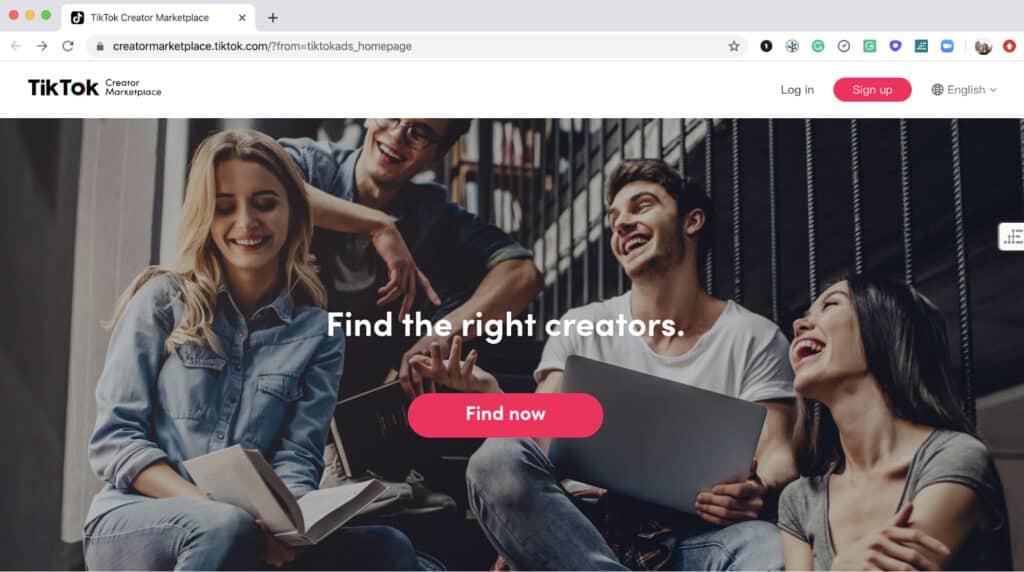
How to find influencers through the TikTok creator hub.
Additionally, brands like Chipotle create opportunities for high levels of engagement on TikTok by creating their own challenges that are both fun and easily doable, including the #ChipotleLidFlip challenge, which currently has over 300M views, and their #GuacDance challenge which has over 1 billion views. By creating these viral challenges, Chipotle makes micro-influencers out of its audience and the everyday TikTok user, who spreads Chipotle’s brand and message through their content.
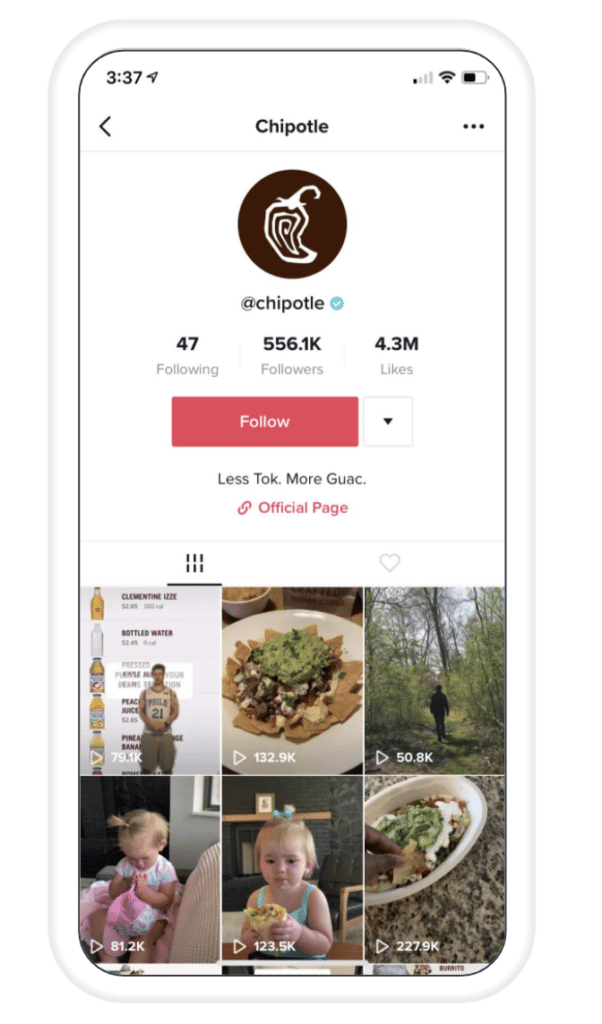
Examples of various videos and video challenges created by Chipotle on TikTok — note the high levels of plays on various videos.
Key takeaway: Engaging with your audience on new, popular platforms such as TikTok opens up new opportunities for your brand to interact with customers in a unique way without relying on traditional paid media channels. Explore different platforms to post on and create content that your audience can easily engage in, such as the use of hashtags and video challenges. Creating this kind of low-stakes, easily digestible and creatable content is likely to get high levels of response.
3. Provide Relevant COVID Updates in Your App
In these unprecedented times, users want to stay up-to-date with the most recent guidelines and anything that can keep them and their loved ones more informed, especially when it comes to COVID information — or how restaurants’ and stores’ operations or hours have changed. To keep users informed, apps like Twitter have added a COVID specific discovery section where users can find country-specific information related to COVID. Twitter also provides users with direct links to the CDC Twitter feed and other health officials for the most recent guidelines on how to protect yourself.
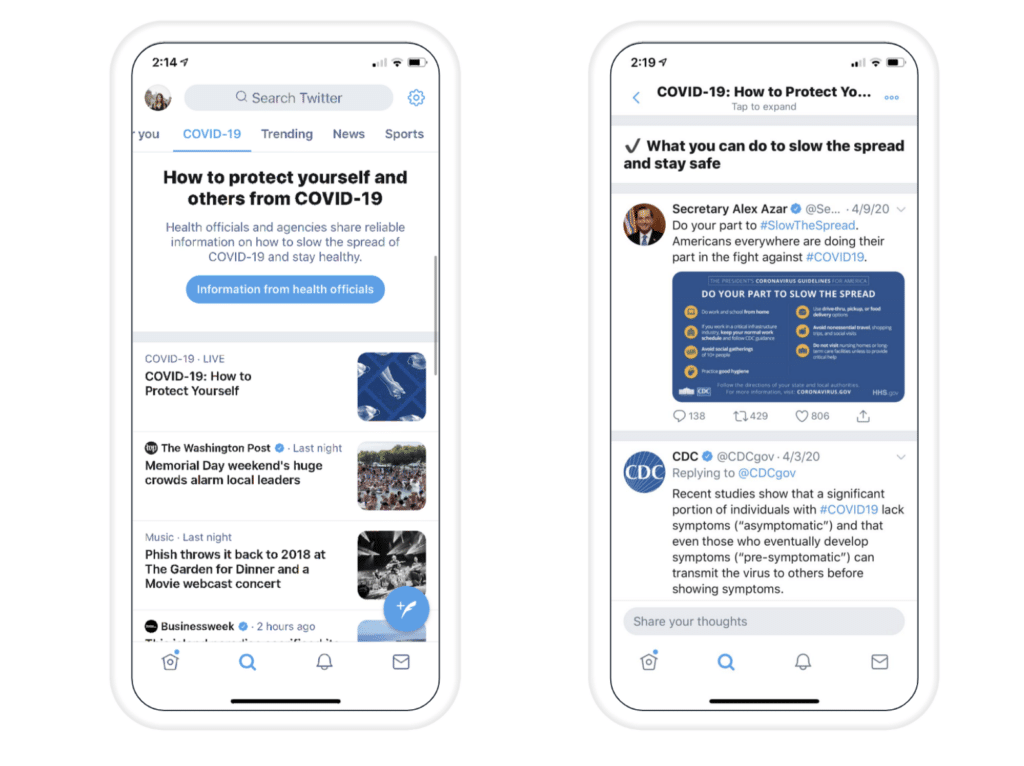
Twitter’s COVID hub, a centralized place where users can get COVID information.
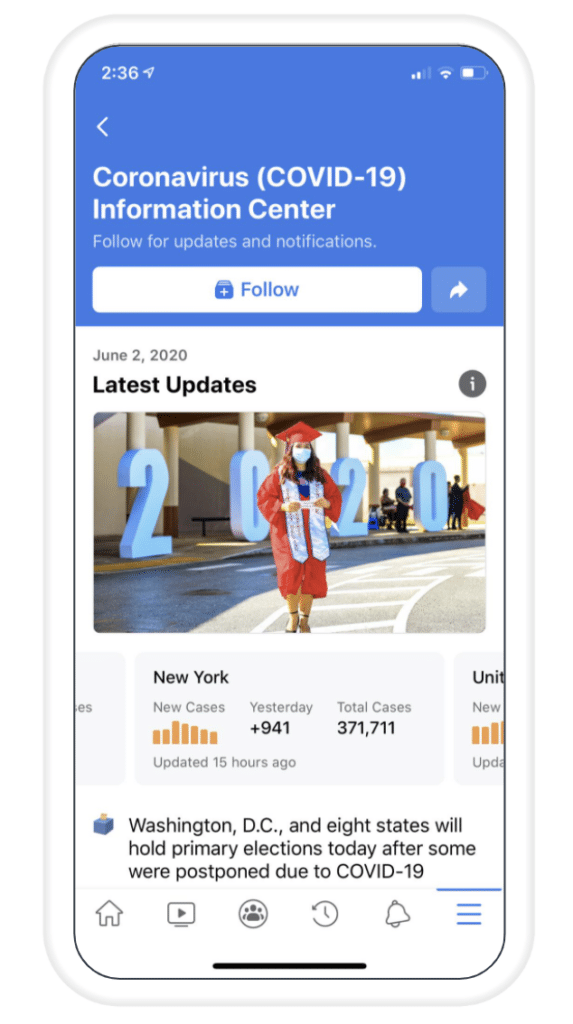
Google’s COVID Information Center.
What this means for your brand: In your app, provide up to date, relevant information on the way the pandemic affects your product/service — whether that be reduced or changed hours, operations, or new features that have been released as a result of the pandemic. Creating an in-app center for this information makes your app a go-to resource, consequently creating more opportunities for engagement. Make sure you follow Google/Apple policies around COVID-related information by including information about how COVID impacts your business specifically rather than general COVID-related information or information pertaining to public health and safety.
The Bottom Line
When pivoting your strategy to respond to COVID-19, it’s important to adjust your brand’s product roadmap to meet your customers’ evolving needs. As you can see in the examples above, social apps can increase engagement by meeting user pain points. Some things to keep in mind when changing your strategy are to switch features that would typically involve physical connection to virtual connection, double down on digital features that allow new online experiences for users, and invest in low-cost engagement strategies users can take part in like hashtags or challenges. By catering to your users’ new needs and pain points, your brand will see higher engagement, retention, and virality — and the effects are sure to last throughout the COVID pandemic and beyond.






















